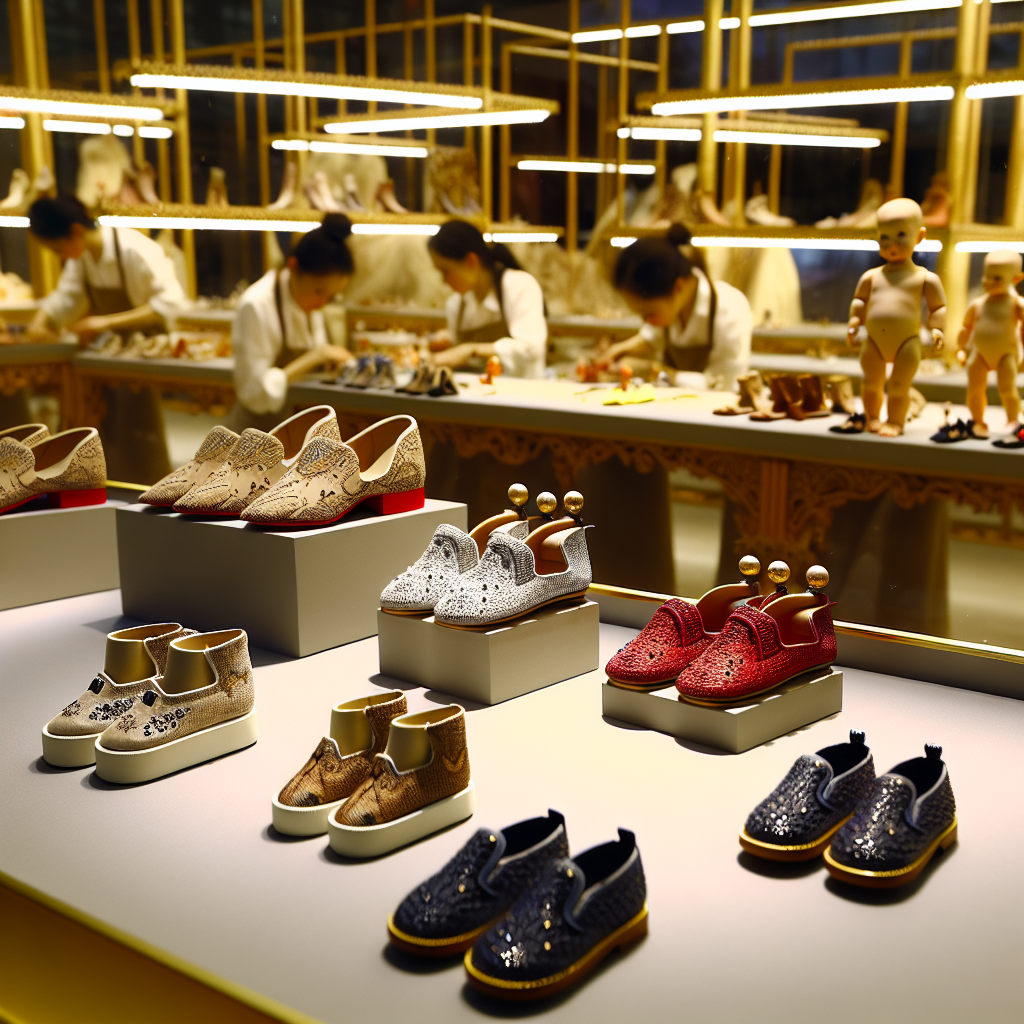Designer School Supplies for Discerning Students
Introduction
In today’s world, discerning parents are seeking more than just functionality when equipping their children for academic success. The modern parent of means increasingly merges practicality with style—and this desire now extends beyond traditional luxury fashion into educational necessities. Designer school supplies have emerged as a growing trend among elite families, providing children with tools that are not only high in quality but also beautifully crafted and reflective of a refined lifestyle.
The evolution from generic school merchandise to high-end, designer alternatives mirrors broader societal shifts in how we view education, wellness, and child development. For affluent parents, academic life isn’t just about test scores—it’s about cultivating identity, instilling confidence, and encouraging a sense of individuality. As children step into educational environments that resemble small communities, their personal branding has started earlier than ever. In this world, a designer backpack or a handcrafted leather notebook becomes much more than a utility—it becomes an extension of one’s self.
Though some may see such purchases as indulgent, for families of significant means, investing in luxury school materials reflects a deeper value proposition: a commitment to quality, durability, and emotional resonance. Esteemed fashion houses such as Gucci, Fendi, and Burberry have rolled out entire collections of youth-focused accessories tailored for back-to-school elegance. At the same time, boutique brands like Olli Ella and Smythson cater to families seeking curated, elegant essentials with stories behind their craftsmanship.
These thoughtfully designed school tools often include elements such as sustainable materials, artisanal artistry, and attention to tactile appeal. For a generation of parents invested in ethical living and mindfulness, these accessories seamlessly align with values like intentional parenting and environmental consciousness.
Now, more than ever, parents understand the significant role aesthetics and material quality can play in fostering a child’s confidence and academic engagement. With education becoming increasingly competitive and driven by holistic development, the humble pencil case or backpack has become a vessel of empowerment. For children, these items are not about flaunting brands—they are about feeling special, organized, and inspired every day.
As we explore the growing realm of designer school supplies, we’ll examine the psychological and developmental benefits these choices may offer, supported by current studies and expert insights. For families who see excellence not just as a goal but as a lifestyle, investing in aesthetic learning tools is not extravagance—it’s a step toward shaping a well-rounded future.
Features: Developmental Benefits and Professional Perspectives
The notion that the quality and design of a pencil case or backpack could influence a child’s educational journey may once have sounded excessive. But today’s research-driven, wellness-focused parenting model has cast a spotlight on the importance of environment in shaping learning outcomes.
A significant study conducted by the University of Salford, titled “Clever Classrooms: Summary Report of the HEAD Project,” revealed that the physical environment of a learning space can influence academic progress by as much as 16% over a single year. While the study primarily analyzed classroom layouts and color schemes, the extrapolated insight is clear: children respond cognitively and emotionally to their environments. Translating this understanding to the portable aspects of that environment—backpacks, writing utensils, notebooks—underscores the importance of personal tools in everyday academic performance.
When children receive high-quality school items, it sends a quiet but impactful message: “Your work matters. You’re worth beautiful, well-made tools.” This not only bolsters self-esteem but also encourages respect and care for belongings. Picture a student carefully organizing colored Faber-Castell limited edition pencils in a Smythson leather pouch—the process becomes a ritual that fosters mindfulness, attention to detail, and personal pride in one’s workspace.
According to child psychologist Dr. Kim Shonstrom, children are more likely to engage with and care about their education when their tools are enjoyable and aesthetically appealing. “Children thrive in environments where structure is not only present but beautifully presented,” she says. “Elegant yet practical school tools can act like anchors—a beautifully made pencil case or notebook becomes part of a calming ritual, encouraging focus and ownership during study time.”
Tactile aesthetics play a strong role in the experience. Items that feel smooth, soft, or weighty in the hand, or that carry the scent of real leather rather than plastic, activate sensory centers that can aid in developing stronger memory retention and comfort levels, especially in younger children. The American Occupational Therapy Association has long emphasized the value of sensory integration, which supports the theory that multisensory engagement can improve cognitive function and emotional regulation in developing brains.
More families are now considering the longevity and integrity of their purchases as well. Brands such as Banwood offer beautifully minimalist backpacks featuring organic fabrics and non-toxic, child-safe materials, ensuring both safety and sustainability. For parents concerned about health and the environment, this is more than good design—it’s a statement about the values they wish to instill in their children.
As these perspectives illustrate, thoughtfully sourced, well-designed educational items are not superficial accessories—they’re formative elements of a child’s routine, personality, and mindset.
Conclusion
In a world where childhood is becoming increasingly nuanced, competitive, and emotionally layered, designer school supplies offer far more than status. They represent an investment in a child’s confidence, sensory development, and daily environment. Equipping young learners with beautifully designed tools tells them their work matters, and by association, they matter too.
For families committed to excellence, elegance, and experiential learning, these tools serve as both practical companions and symbolic representations of intentional living. Whether it’s a Smythson notebook, a handcrafted pencil sharpener, or an ethically-sourced backpack from Banwood, the use of fine objects imbues everyday study moments with grace and dignity.
Designer school supplies are more than indulgences. They are objects of purpose—designed to cultivate a love of learning, inspire a sense of pride, and contribute to the long-term development of a thoughtful, well-equipped individual.
References
- Clever Classrooms – University of Salford HEAD Project
- American Occupational Therapy Association – Sensory Integration Overview
- Banwood Official Site – Sustainable Backpack Options
- Smythson Stationery and Leather Goods
- Faber-Castell Luxury Writing Tools
- Gucci Children’s Collection
- Olli Ella Designer Children’s Accessories

Dominic E. is a passionate filmmaker navigating the exciting intersection of art and science. By day, he delves into the complexities of the human body as a full-time medical writer, meticulously translating intricate medical concepts into accessible and engaging narratives. By night, he explores the boundless realm of cinematic storytelling, crafting narratives that evoke emotion and challenge perspectives. Film Student and Full-time Medical Writer for ContentVendor.com




